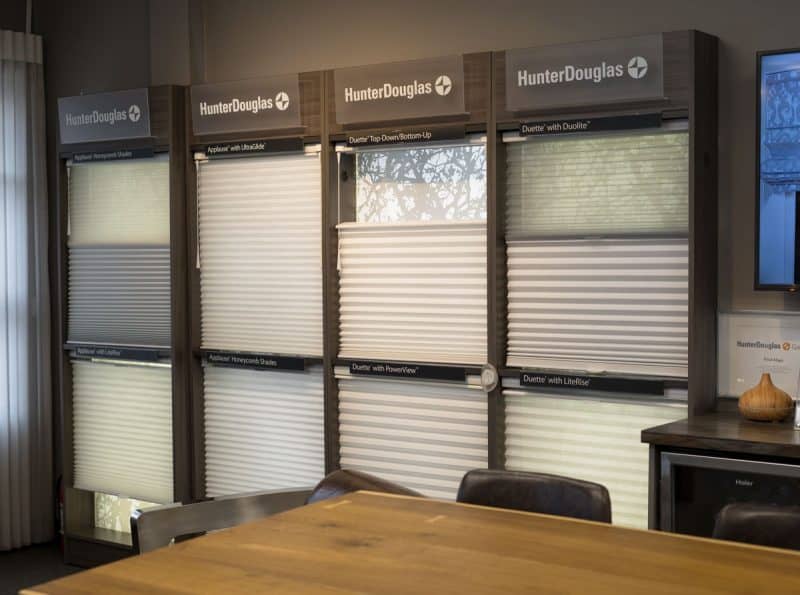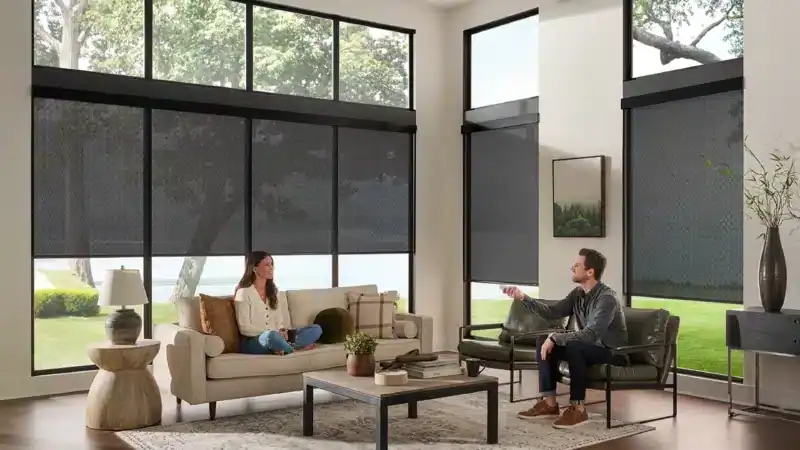Exploring options for superior energy efficiency, homeowners often narrow their choices down to two leading Hunter Douglas products, Duette® Honeycomb Shades and Solera® Soft Shades, when considering premium window treatments that offer both style and substantial energy savings. If you are exploring options for superior energy efficiency, you might be wondering how these two products compare, as detailed in guides like smart ways to avoid common DIY painting errors in Edmonton winters, both lines are designed to enhance comfort and reduce utility costs, but they achieve this through distinct structural designs and material compositions, making the choice dependent on specific aesthetic and functional priorities. Understanding the core differences between these options is crucial for making an informed decision for your Edmonton home, whether you prioritize the proven cellular structure or the softer, fabric-based look.
Key Insights
- Duette® Honeycomb Shades are renowned for their cellular construction, which traps air to create exceptional insulation, making them a top choice when focusing on understanding the physics of window insulation.
- Solera® Soft Shades blend the look of a Roman shade with the insulating properties of a cellular shade, offering a softer aesthetic while still contributing to designing effective insulating barriers with window coverings.
- Both shade types offer advanced operating systems, including options for motorization, which can be compared against other systems like choosing the best motorization system for your residence.
- Duette shades are available with a FREE Top Down Bottom Up Upgrade promotion, which is a valuable feature for light control and privacy.
- The choice often comes down to whether you prefer the crisp, geometric look of honeycomb cells or the draped, fabric appearance of the Solera shades.
Duette vs. Solera: A Look at Core Differences
The fundamental distinction between Duette® Honeycomb Shades and Solera® Soft Shades lies in their construction, which directly impacts their insulation capabilities and visual texture. While both are engineered for energy efficiency, the Duette shade utilizes a unique honeycomb cell structure, whereas the Solera shade uses layered fabric folds, and for homeowners looking to understand the trade-offs, reviewing the core specifications side-by-side is helpful.
| Feature | Duette® Honeycomb Shades | Solera® Soft Shades |
|---|---|---|
| Primary Structure | Distinctive honeycomb/cellular design | Layered fabric folds resembling Roman shades |
| Insulation Mechanism | Air trapped within vertical cells | Air pockets created by layered fabric |
| Aesthetic | Crisp, modern, geometric | Soft, fabric-like, draped appearance |
| Light Control Options | Sheer, light-filtering, or Duolite® (double-cell blackout) | Various fabric opacities available |
The Duette® Honeycomb Shade is celebrated for its pioneering design, which creates pockets of air that serve as an insulating barrier against heat transfer, a concept vital for homeowners interested in practical methods for using window treatments as insulation.
Duette® Honeycomb Shade Construction
Duette shades are fundamentally defined by their cellular structure, which is highly effective at minimizing energy loss through windows, making this design an excellent choice for homes in climates requiring significant heating or cooling, and they are often featured when discussing why upgrading your window coverings is a smart move due to their insulating benefits.
- Single, Double, and Triple Cell Options: Offering varying levels of insulation based on the number of air pockets created.
- Duolite® Feature: Allows for two different fabrics on one shade, offering both light filtering and room darkening capabilities simultaneously.
Insulation Performance Showdown: Honeycomb vs. Soft Fabric
When comparing Duette and Solera shades, insulation performance is a primary concern, as both products aim to improve home energy efficiency, and the way each shade traps air is different, leading to potentially varied R-values and performance metrics, which is a key factor when learning about the scientific principles behind window energy efficiency.
- Duette® Honeycomb Shades utilize vertical, interconnected cells that create distinct pockets of still air, offering industry-leading insulation, especially in the double or triple-cell configurations.
- Solera® Soft Shades achieve insulation through layers of fabric that fold, creating insulating air pockets similar to cellular shades, but with a softer, more textile-focused construction.
- For maximum thermal performance, Duette shades, particularly those with the double-cell design, often provide the highest R-value, effectively reducing heat transfer year-round.
Energy Efficiency Deep Dive
The insulating power of these shades is a major selling point, especially for those looking to lower energy bills, and if you are considering upgrading, remember that insulating shades can significantly impact your comfort, as highlighted in articles discussing how to build effective insulating barriers with shades.
- Duette Insulation: The crisp, geometric structure of the honeycomb cells is specifically designed to trap air, providing a robust barrier against temperature fluctuations.
- Solera Insulation: While effective, the insulation relies on the density and layering of the fabric material, offering a softer, yet still substantial, thermal buffer.
Aesthetic Appeal: Matching Your Decor with Duette and Solera
Beyond function, the visual impact of window treatments is paramount, as Duette shades offer a clean, tailored look, while Solera shades provide a warmer, fabric-rich texture that mimics traditional Roman shades, and when reviewing current design trends, understanding how these different textures fit into your space is important, as seen in discussions about current window treatment style trends for 2024.
| Aesthetic Element | Duette® Honeycomb Shades | Solera® Soft Shades |
|---|---|---|
| Texture | Structured, geometric, clean lines | Soft, fabric-like, draped folds |
| Fabric Hand | Generally more uniform and crisp | Richer, textile appearance |
| Stack Height | Generally lower profile when fully raised | Slightly higher stack due to fabric folding |
| Color Palette | Wide range of colors and textures | Focus on woven fabrics and natural tones |
Design Versatility
The aesthetic choice between these two shades often dictates the overall feel of the room, as while Duette shades provide a contemporary, streamlined appearance, Solera shades introduce a touch of softness that complements more traditional or cozy interiors, and if you are looking for sophisticated fabric options, you might also want to explore other styles like the rising popularity of Roman shades in 2023.
- Duette Style: Ideal for modern interiors or spaces where a minimal profile is desired, ensuring the focus remains on the view or the room’s architecture.
- Solera Style: Excellent for adding warmth and texture, often preferred in living areas or bedrooms where a softer, more inviting look is sought.
Operating Systems: Motorization and Corded Options Compared
Both Duette and Solera shades are available with various operating systems, allowing homeowners to select the best fit for safety, convenience, and budget, and for those prioritizing smart home integration, motorization is a key consideration, and you can learn more about advanced options by reading about the arrival of PowerView Automation Gen 3.
| Operating System | Duette® Honeycomb Shades | Solera® Soft Shades |
|---|---|---|
| Standard Operation | Corded, LiteRise®, UltraGlide® | Corded, LiteRise® |
| Motorization | PowerView® Automation | PowerView® Automation |
| Cordless Safety | Available via LiteRise® or PowerView® | Available via LiteRise® or PowerView® |
| Top-Down/Bottom-Up | Available across systems, sometimes with promotional upgrades like the take advantage of the top-down bottom-up upgrade sale offer. | Available |
Motorization Advantages
Upgrading to motorized shades offers unparalleled convenience, especially for high or hard-to-reach windows, as Hunter Douglas offers PowerView® Automation for both Duette and Solera lines, allowing for precise control via remote or app, and furthermore, for motorized shades, the availability of accessories like the newly available PowerView Solar Chargers ensures minimal maintenance for powered systems.
- PowerView® Automation: Provides scheduling and voice control capabilities, integrating seamlessly into a modern smart home setup.
- Cordless Safety: For households with children or pets, cordless options like LiteRise® are crucial, aligning with safety standards discussed regarding protecting children around windows.
Which Shade is Right for Your Edmonton Home?
Deciding between Duette and Solera shades depends heavily on prioritizing insulation performance versus aesthetic texture, and if you are looking to maximize energy savings, especially in older homes where you might be focused on five compelling reasons to upgrade your window coverings, Duette shades are often the superior choice due to their cellular design.
- Choose Duette if: Your primary goal is maximum energy efficiency and you prefer a clean, crisp look for your window treatments.
- Choose Solera if: You desire the insulating benefits of a cellular shade but prefer the softer, fabric-draped appearance of a Roman shade.
- Consider Motorization: For large expanses of windows or for enhanced convenience, exploring PowerView® Automation for either shade type is recommended.
- Check Local Offers: Keep an eye out for promotions, such as the current double the savings event when purchasing Duette Honeycomb Shades.
Local Considerations
For homeowners in areas like Sherwood Park or St. Albert, understanding local service and product availability is key, and whether you are seeking quality Hunter Douglas blinds in Sherwood Park or need service in St. Albert, consulting with a local expert ensures proper measurement and installation for optimal performance of your chosen shade type.
Conclusion
Ultimately, both Duette® Honeycomb Shades and Solera® Soft Shades represent top-tier window treatment solutions known for their quality and energy-saving potential, as the Duette shade excels in raw thermal performance due to its cellular structure, making it the benchmark for insulation, while the Solera shade offers a compelling blend of cellular insulation wrapped in a warmer, Roman-shade aesthetic. When making your final selection, weigh your need for the highest R-value against your desired fabric texture and operating system preference, and for further guidance on style trends or product specifics, reviewing resources like the Blind Magic Blog can provide additional context for your window treatment decision.
FAQ
| Question | Answer |
|---|---|
| Which shade offers better insulation, Duette or Solera? | Generally, Duette® Honeycomb Shades, especially in double or triple-cell configurations, offer superior insulation due to their distinct, air-trapping cellular structure. |
| Can both shades be motorized? | Yes, both Duette and Solera shades are compatible with Hunter Douglas PowerView® Automation for convenient, motorized control. |
| What is the main aesthetic difference? | Duette shades have a crisp, geometric look from the honeycomb cells, whereas Solera shades feature soft, layered fabric folds resembling Roman shades. |
| Are Duette shades available with top-down/bottom-up control? | Yes, Duette shades support top-down/bottom-up operation, and customers should inquire about current offers like the take advantage of the top-down bottom-up upgrade sale for Duette purchases. |
| Where can I compare Hunter Douglas products locally? | You can find information about local service areas, such as finding Hunter Douglas blinds in Leduc, to discuss these options in person. |




